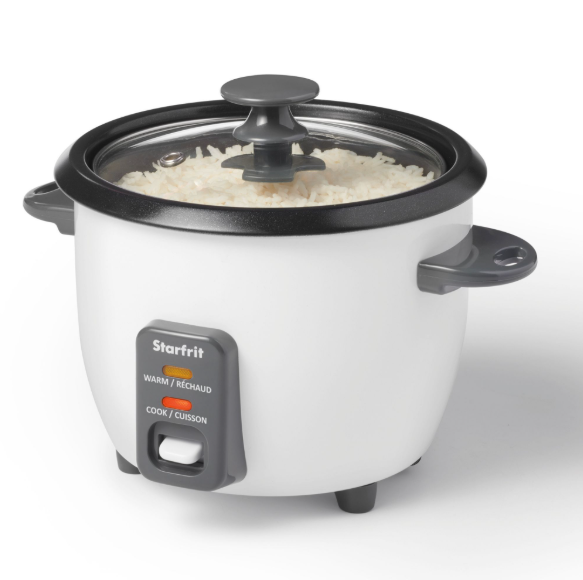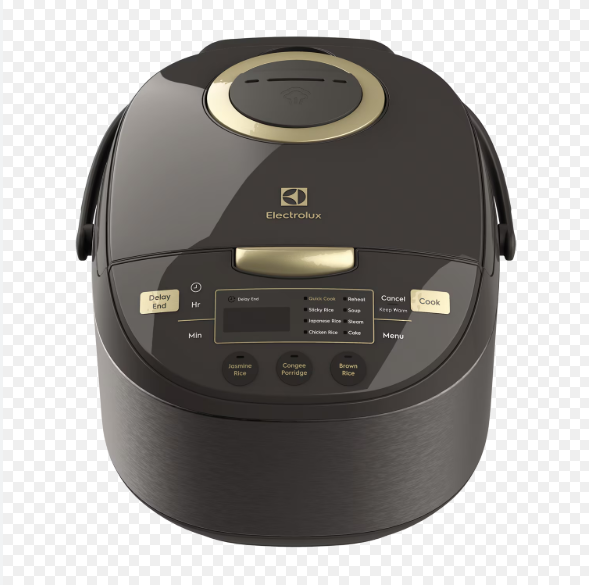Learning how to fix an electric cooker not heating can save you time and frustration, keeping your kitchen running smoothly in 2025. Electric cookers, also known as rice cookers or multi-cookers, are versatile appliances that simplify cooking with electric cooker by preparing rice, soups, steamed vegetables, and more with ease. A common issue, like the cooker not heating, can disrupt your meal prep, but it’s often fixable with basic electric cooker troubleshooting. Whether you’re using a portable electric cooker or a family-sized model, this electric cooker user guide focuses on resolving heating issues while covering usage basics. For more insights, explore our electric cooking tips.
This how to fix an electric cooker not heating guide includes preparation, a step-by-step cooking process with how to cook rice in an electric cooker, maintenance tips, troubleshooting steps, and answers to common questions. This beginner-friendly guide ensures you can diagnose and fix your cooker or use it effectively. Always consult your model’s manual for specific instructions. Let’s dive into solving the heating issue and mastering your electric cooker in 2025!
What You Need Before Using
Before tackling how to fix an electric cooker not heating, proper preparation ensures safe and effective use of your electric cooker. Your appliance typically includes a main unit, a non-stick inner pot, lid, measuring cup, and spatula. Some models include a steaming basket for versatility. If accessories are missing, purchase compatible ones from the manufacturer to ensure performance and safety.
Verify your cooker’s power compatibility—most models use 120V or 220V outlets, depending on your region. Check the capacity: 3-5 cups for individuals, 8-10 cups for families. Choosing the right size prevents spills, which can complicate electric cooker maintenance. For electric cooker safety, place the appliance on a stable, heat-resistant surface, away from water to avoid electrical hazards—a key step when troubleshooting heating issues. Inspect the power cord for damage; a frayed cord can cause heating failures and should be replaced. Use in a well-ventilated area, and never leave it unattended.

Before first use, clean the inner pot, lid, and accessories with warm soapy water, rinse thoroughly, and dry to remove manufacturing residues. Use the provided measuring cup for accurate portions; a 1:1.5 rice-to-water ratio works for white rice, with adjustments for brown varieties. Read the manual for model-specific details on buttons or settings. Gather ingredients, keep children and pets away from hot surfaces, and use oven mitts. Use a dedicated outlet to avoid circuit overloads, which can contribute to heating issues. These steps ensure a smooth electric cooker setup. For more guidance, visit our cooker guide.
Step-by-Step Cooking Guide
This how to fix an electric cooker not heating guide includes a beginner-friendly electric cooker user guide to help you use your appliance effectively, ensuring it heats properly. We’ll cover preparing ingredients, electric cooker setup, selecting modes, starting cooking, testing doneness, and detailed electric cooker troubleshooting for heating issues.
Preparing Ingredients
Start by preparing ingredients to ensure consistent results. For how to cook rice in an electric cooker, rinse 1-2 cups of rice under cold water until clear to remove starch, ensuring fluffy grains and reducing sticky residue. Drain well. For soups, chop vegetables like onions or carrots and measure broth. Season early with salt or herbs for flavor. For steaming, place vegetables or proteins in the steamer basket. Prep takes 5-10 minutes and minimizes mess, supporting electric cooker maintenance.
Setting Up the Cooker
Plug your electric cooker into a stable outlet on a flat, heat-resistant surface. Insert the clean inner pot, add ingredients (e.g., rinsed rice and water), and secure the lid until it locks. Select the cooking mode using the control panel—basic models offer “Cook” and “Warm,” while advanced ones have presets for rice, steam, or soup. If the cooker isn’t heating, check the setup before proceeding, as a loose lid or faulty plug can cause issues.

For portable electric cooker users, ensure stability to avoid spills, which can affect internal components and cause heating failures. Check the lid seal to prevent steam leaks, a common issue in electric cooker troubleshooting.
Selecting Modes
Choose the right mode for your dish. For rice, select “White Rice” or “Brown Rice” for optimized timing. Use “Steam” mode for vegetables or fish, adding 1-2 cups of water below the basket. “Soup” or “Porridge” modes suit slow-simmered dishes. If no presets, set manual times: 20-30 minutes for rice, 45-60 for soups. If the cooker doesn’t heat, the mode selection may not activate—check power and connections first, as outlined in how to fix an electric cooker not heating.
Starting Cooking
Press “Start” or flip the switch—the indicator light should confirm operation. If it doesn’t, this signals a heating issue. Keep steam vents clear to avoid pressure buildup. Avoid opening the lid mid-cook to maintain heat. The cooker should switch to “Warm” mode automatically when done, keeping food at serving temperature. Cooking times vary—smaller batches cook in 15-20 minutes for rice. If no heat is detected, proceed to troubleshooting steps below.
Testing Doneness
After switching to “Warm,” wait 5-10 minutes for settling. Open the lid carefully with oven mitts to avoid steam burns. For rice, fluff with a spatula and check for tenderness—grains should be soft but not mushy. For soups, taste for seasoning and texture. If undercooked due to no heat, troubleshoot immediately. For steamed items, test with a fork—they should be tender yet crisp. Proper doneness relies on a functioning cooker, making how to fix an electric cooker not heating critical.
Troubleshooting
For electric cooker troubleshooting, focus on how to fix an electric cooker not heating. Follow these steps:
1. Check the Power Supply: Ensure the cooker is plugged into a working outlet. Test with another appliance to confirm. A blown fuse or tripped breaker can cause heating failure.
2. Inspect the Cord and Plug: Look for frayed wires or loose connections. Replace damaged cords immediately to restore power.
3. Verify Lid Alignment: A misaligned lid or loose seal can prevent heating, as many cookers require a secure lock to activate. Adjust or replace the seal.
4. Clean Internal Components: Food residue or debris on the heating plate or sensor can disrupt function. Unplug, cool, and wipe the plate with a damp cloth.
5. Check the Thermal Fuse: A blown thermal fuse, common in older models, stops heating. Consult the manual and replace if needed (DIY for advanced users or seek professional help).
6. Reset the Cooker: Unplug for 10 minutes to reset internal electronics, then retry. If error codes (e.g., E1) appear, refer to the manual.
If these steps don’t resolve the issue, contact a technician. Burnt food or overflow? Adjust water ratios and clean thoroughly to prevent recurrence. These steps apply to most models, including portable electric cooker units. Practice with electric cooker recipes like steamed vegetables to test fixes.
Tips for Successful Cooking
Master how to fix an electric cooker not heating with these best electric cooker tips. For electric cooker maintenance, clean the cooled inner pot with a soft sponge—avoid abrasives to protect the non-stick coating. Wash detachable parts like the lid or steam tray with warm soapy water and air dry to prevent mold. Never immerse the base; wipe with a damp cloth. For stubborn stains, soak in a vinegar-water mix (1:4 ratio) for 15-20 minutes—residue can affect heating performance.
For electric cooker safety, use wooden or plastic utensils to avoid scratches, and store in a dry place. Save energy by cooking in batches and using “Warm” mode’s residual heat. Explore electric cooker recipes like quinoa, steamed eggs, or yogurt for variety. Add seasonings post-cook to customize flavors. For portable electric cooker use, pack securely and check voltage compatibility when traveling. Avoid overfilling to prevent spills—most pots have capacity markers. Descale every three months with a vinegar-water mix to remove buildup, ensuring the heating element functions properly. For more tips, visit our electric cooker.
Frequently Asked Questions
This how to fix an electric cooker not heating guide answers common queries to enhance your electric cooker user guide.
What Happens If Power Goes Out?
If power cuts off, cooking stops. When power resumes, restart if less than halfway done; otherwise, check doneness manually. Discard food if left warm too long to avoid spoilage. A power outage may mimic a heating issue, so verify the outlet first.
How to Fix Common Issues?
Beyond how to fix an electric cooker not heating, address other issues like steam leaks by tightening the lid or replacing the seal. Sticky rice? Adjust water ratios and clean thoroughly. Regular maintenance prevents most problems, as outlined in electric cooker troubleshooting.
Do You Need Professional Help?
Minor fixes like cleaning or seal replacement are DIY-friendly. For persistent heating issues, like a blown thermal fuse, contact a technician to avoid risks. Check your warranty for coverage.
Is It Safe for Travel?
Portable electric cooker models are travel-safe if voltage-compatible. Pack securely and check airline rules. Use in hotels with stable power to avoid heating issues, ensuring safe operation.
Conclusion
This how to fix an electric cooker not heating guide empowers you to troubleshoot and maintain your electric cooker, ensuring reliable performance in 2025. With easy electric cooker setup and diverse electric cooker recipes, these appliances simplify meal prep while offering portability and electric cooker safety. Start with simple dishes, keep your cooker in top shape, and enjoy hassle-free cooking with confidence.
Ready to keep your cooker running smoothly? Discover more electric cooking tips to master your electric cooker in 2025!